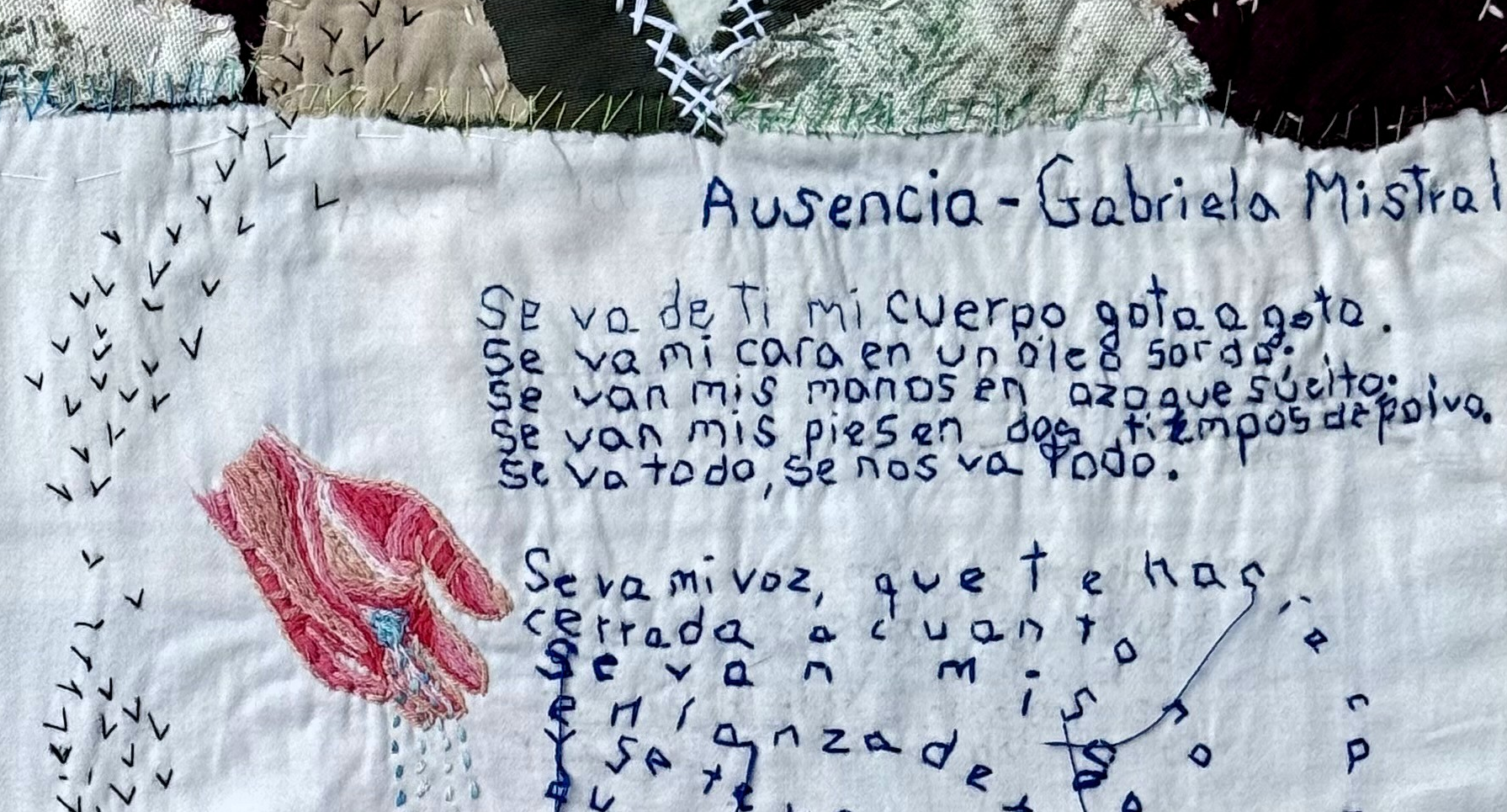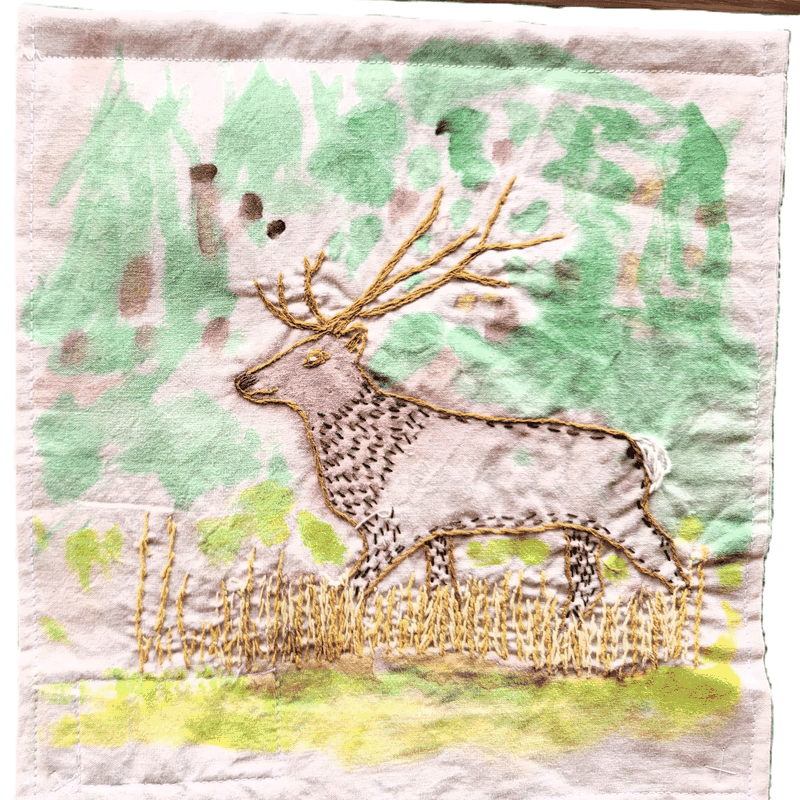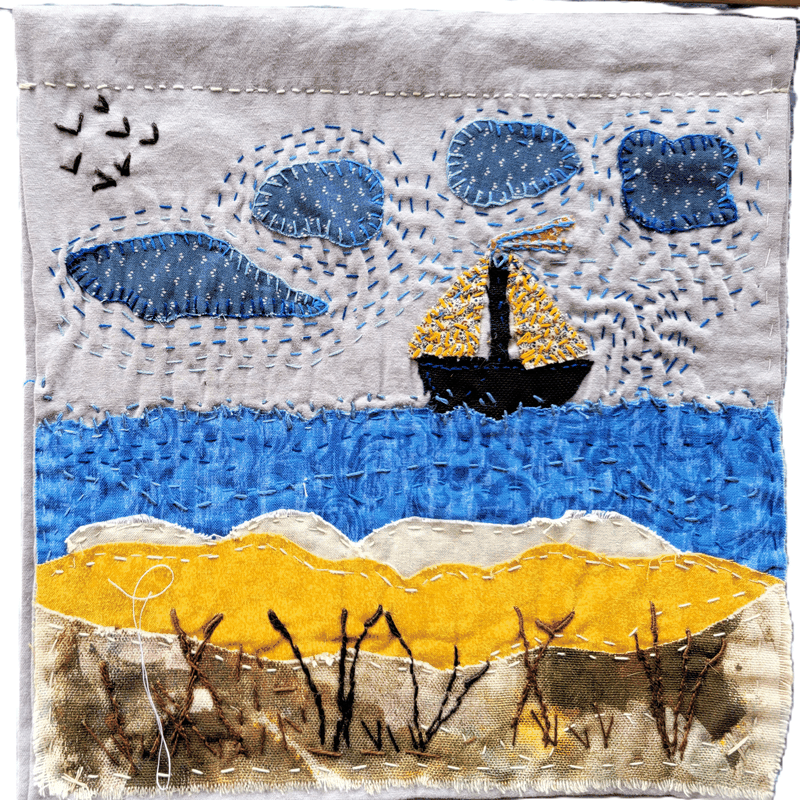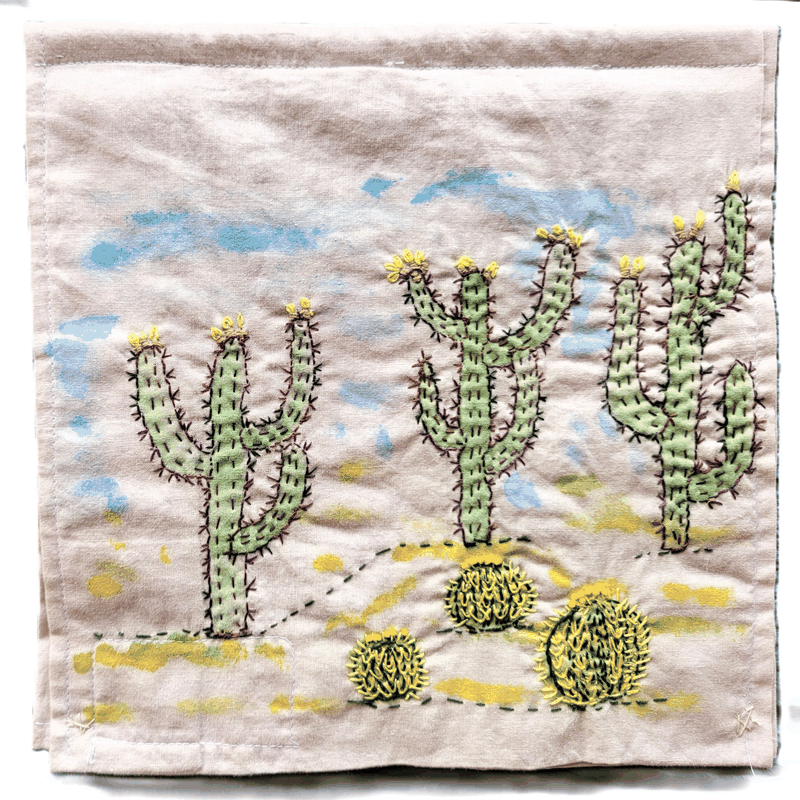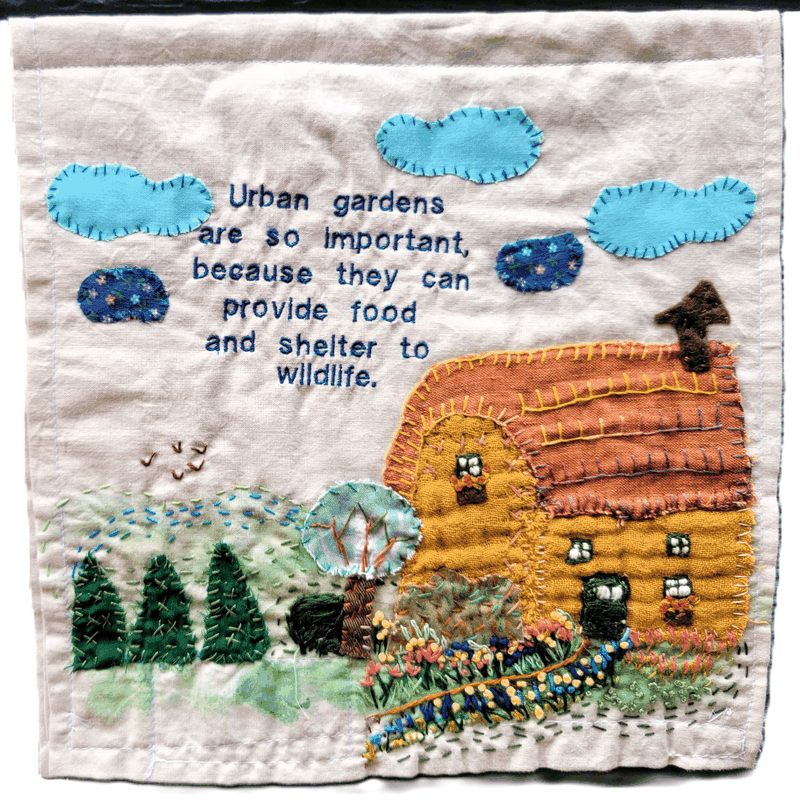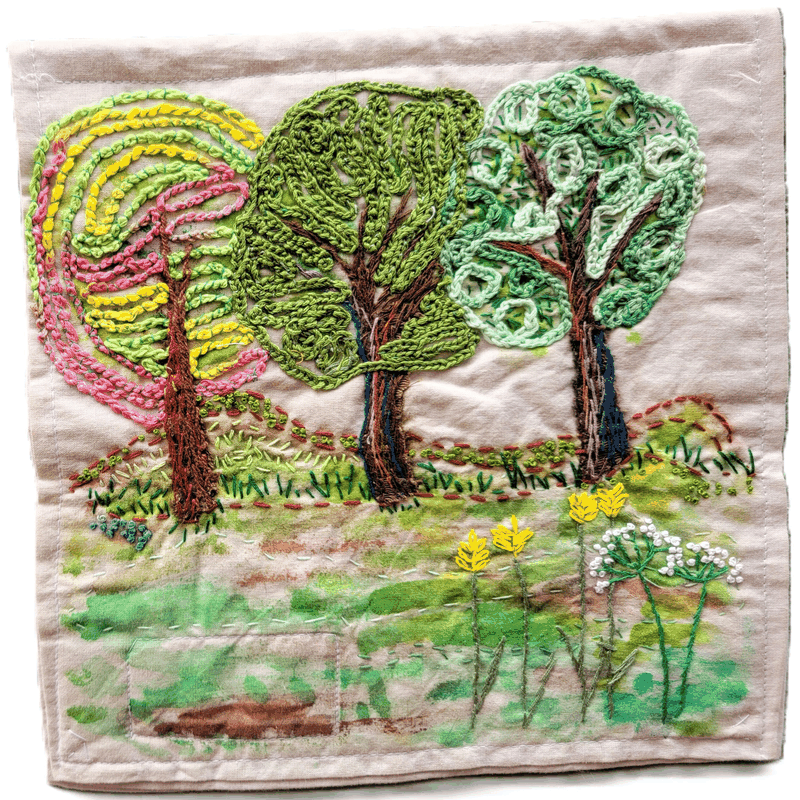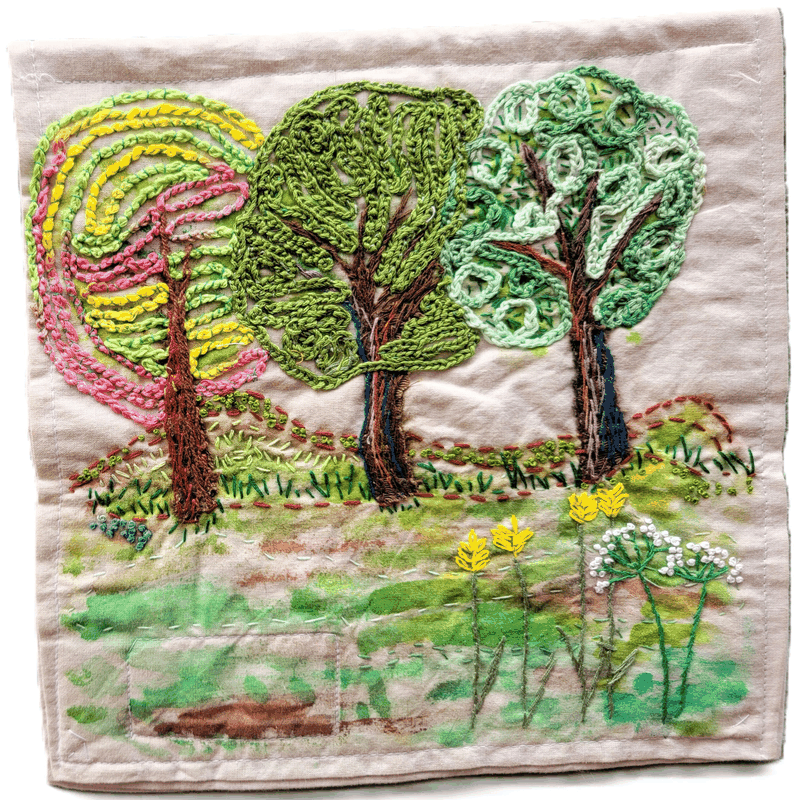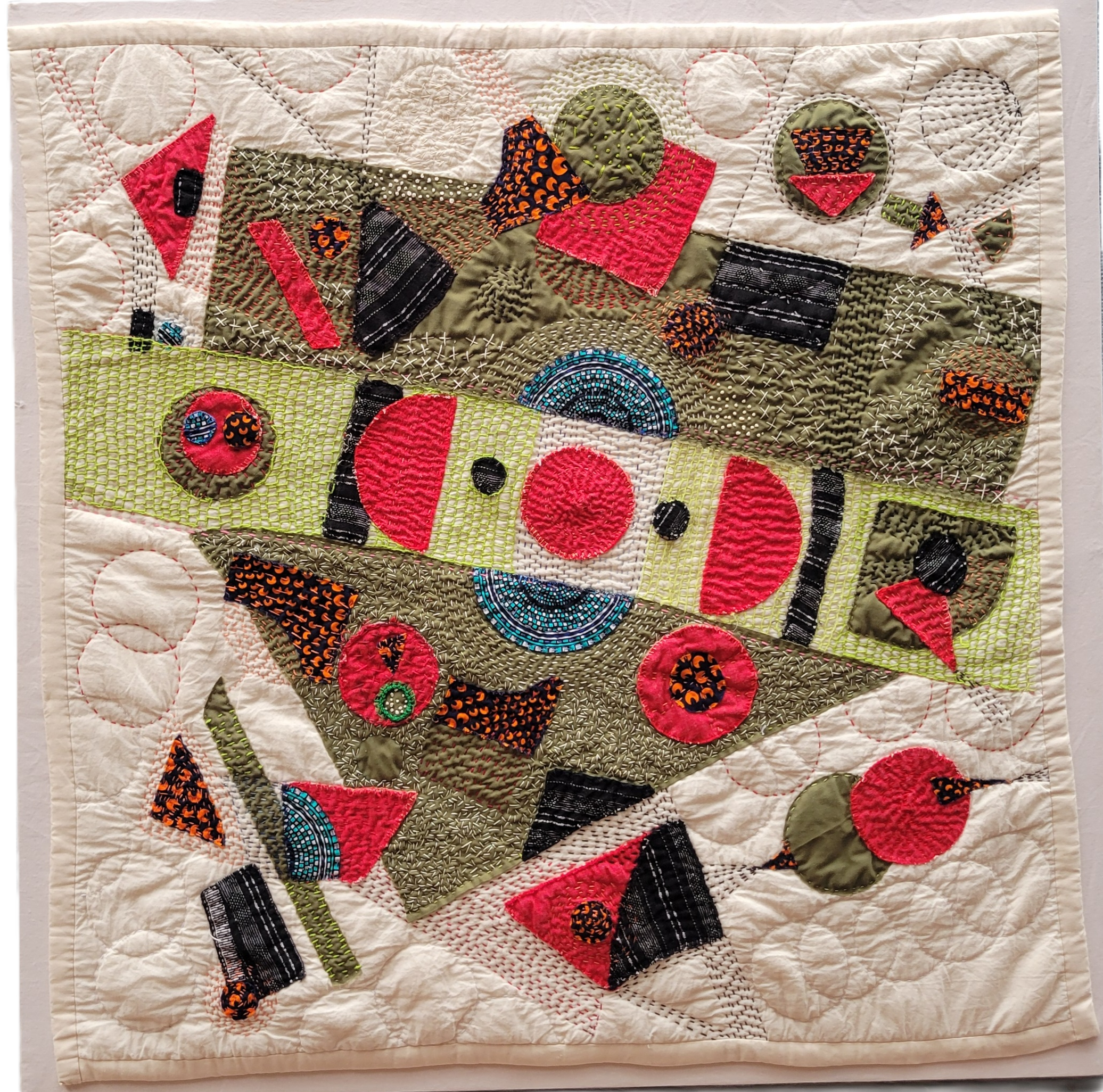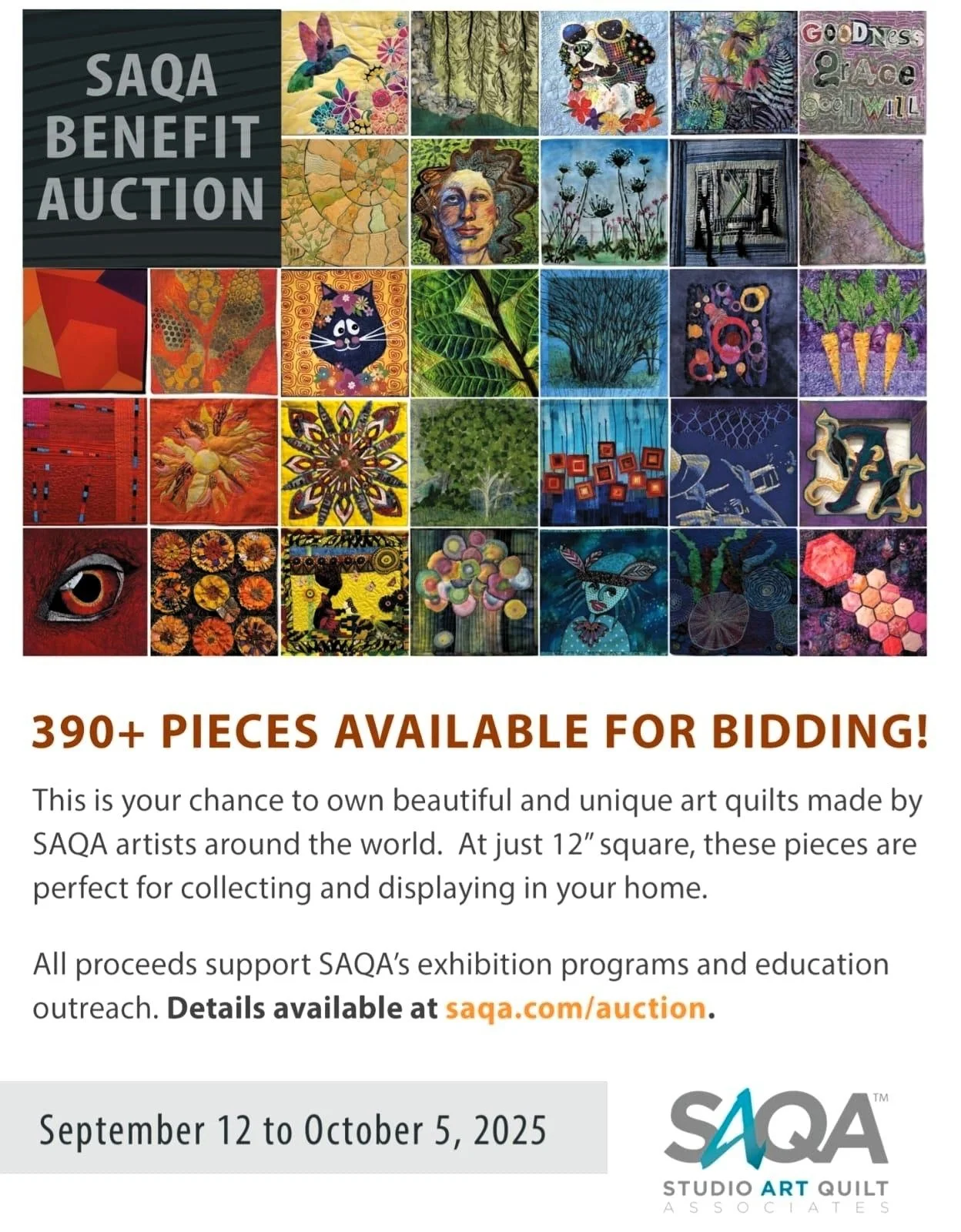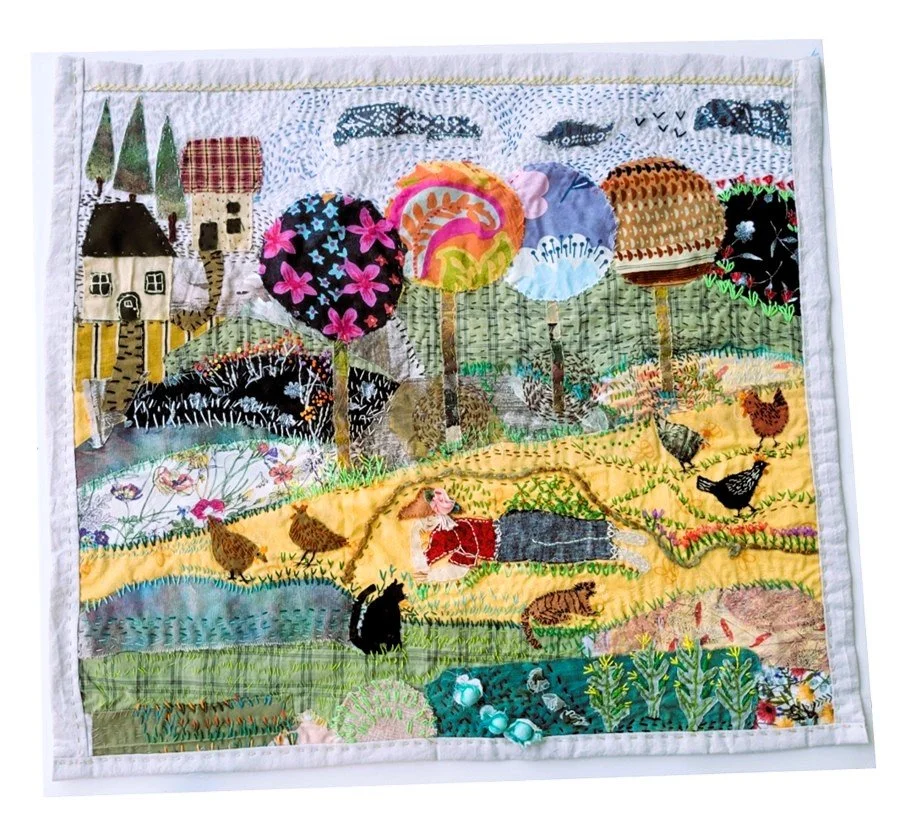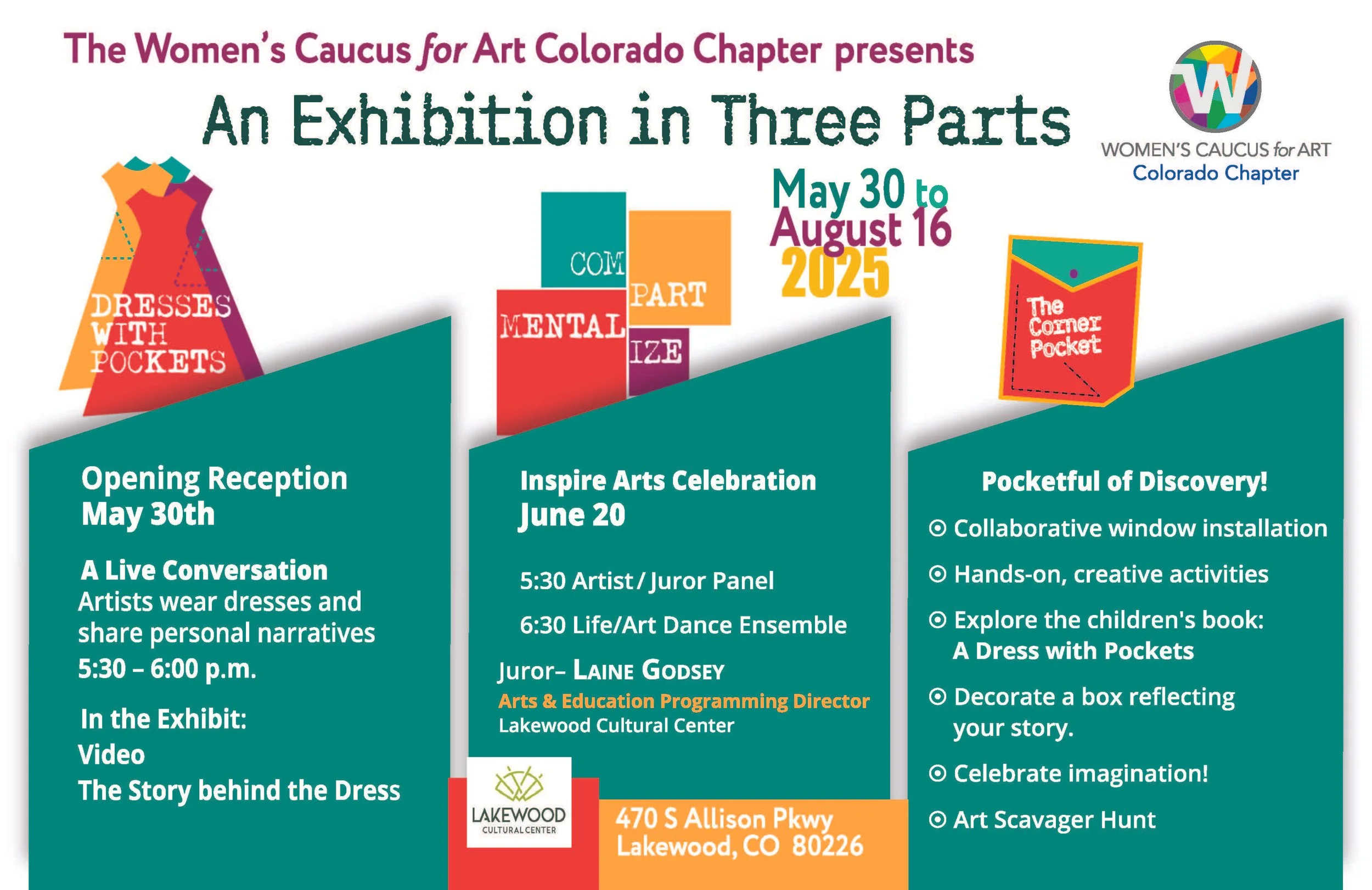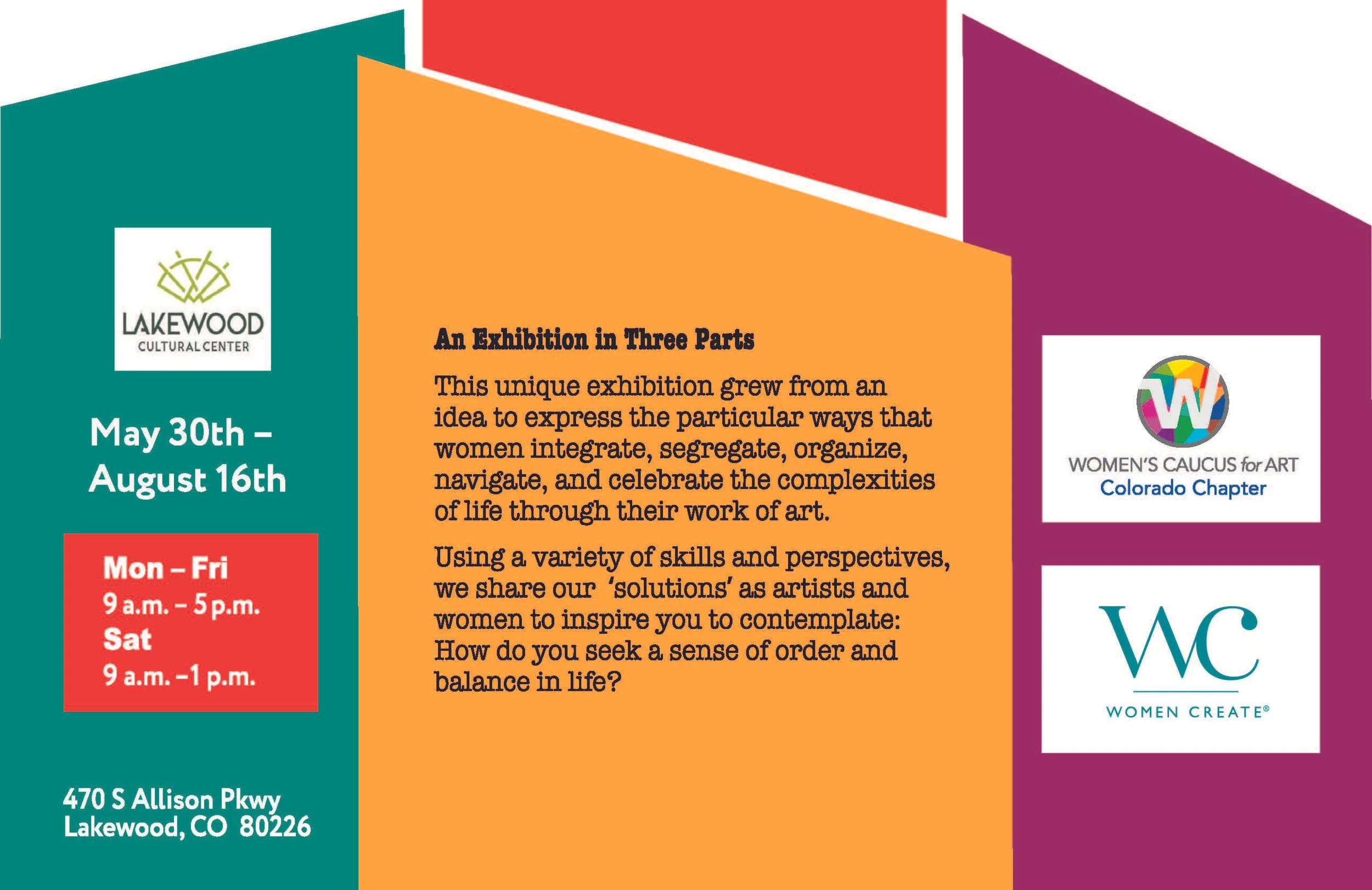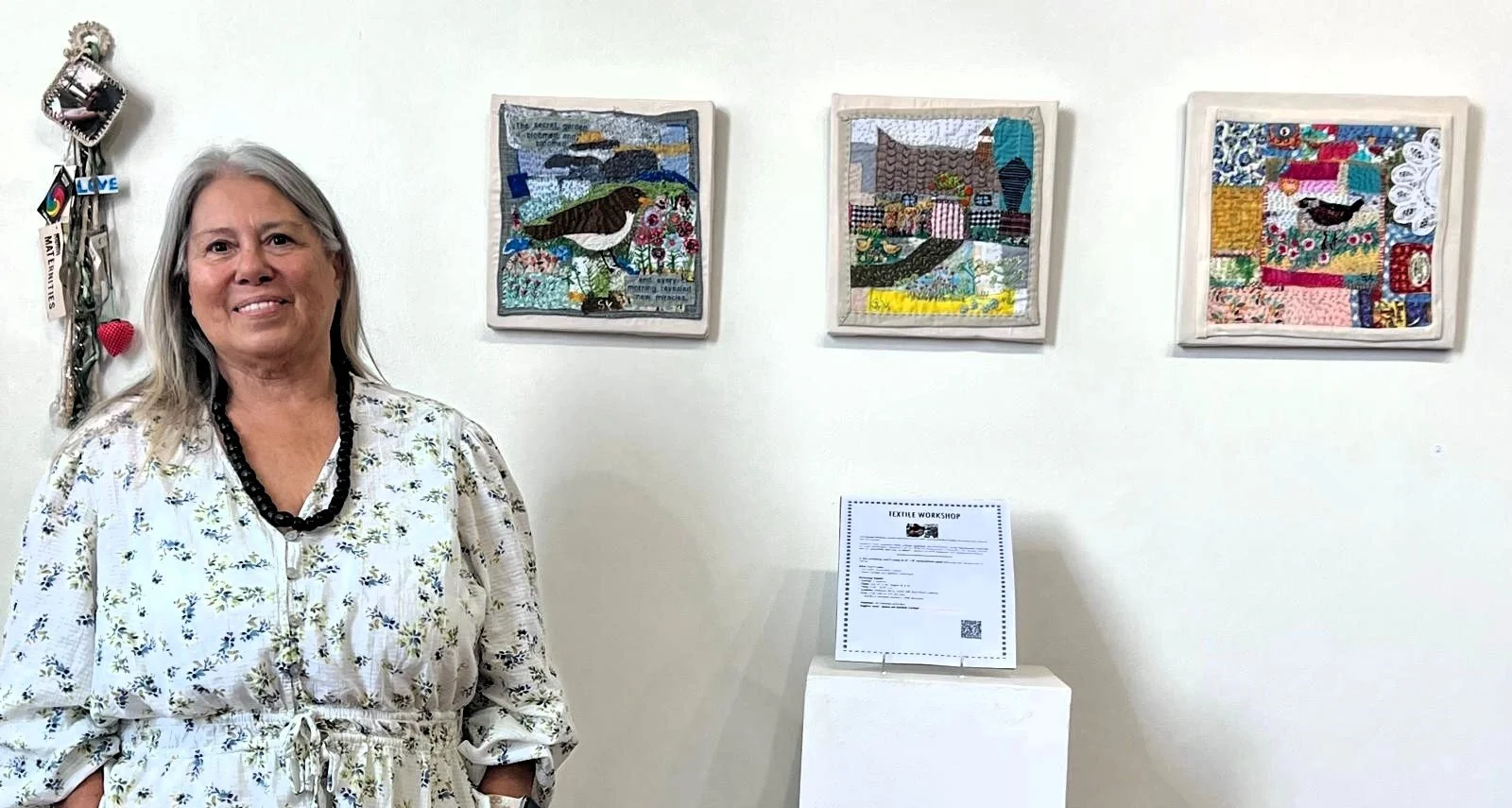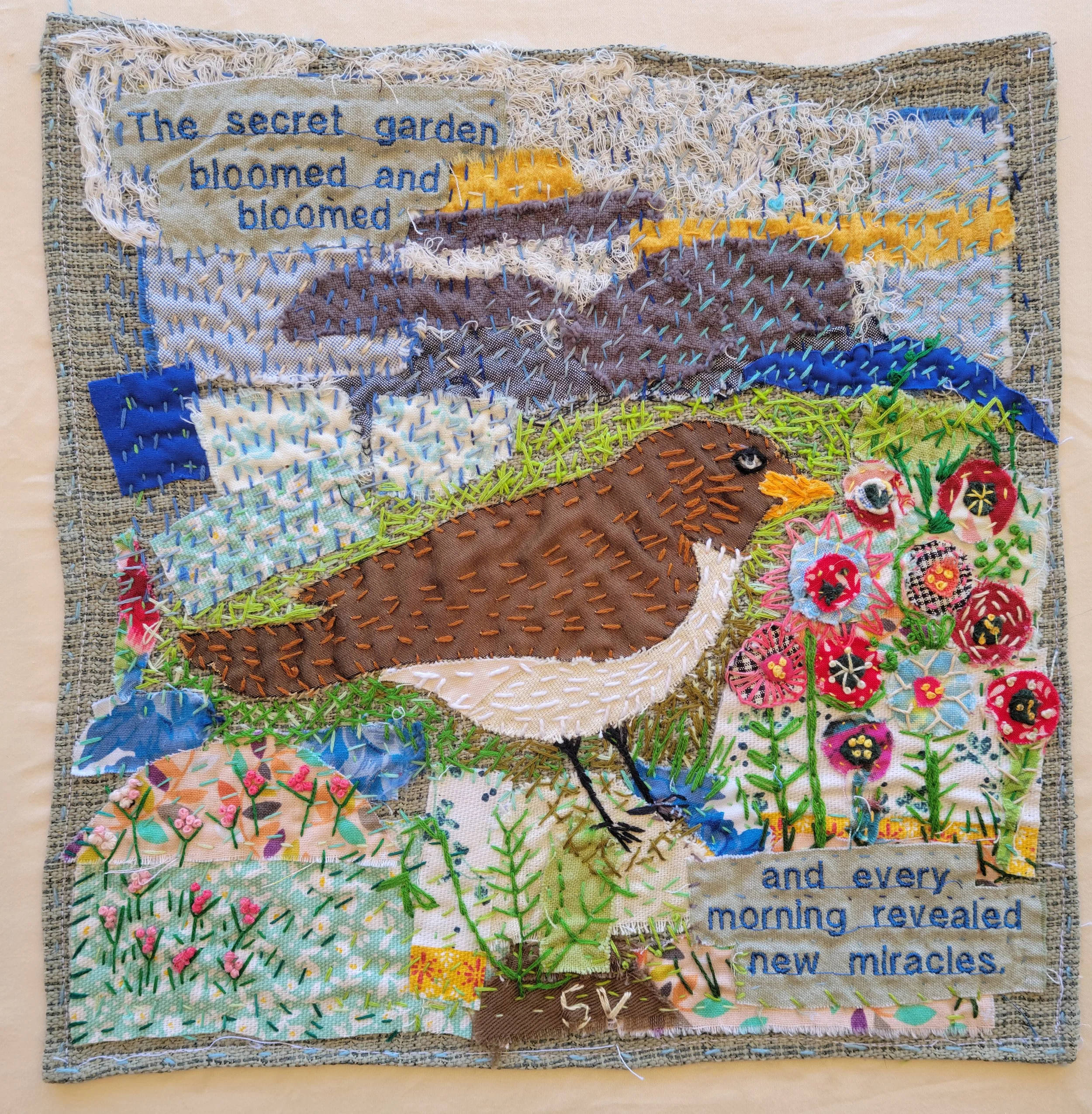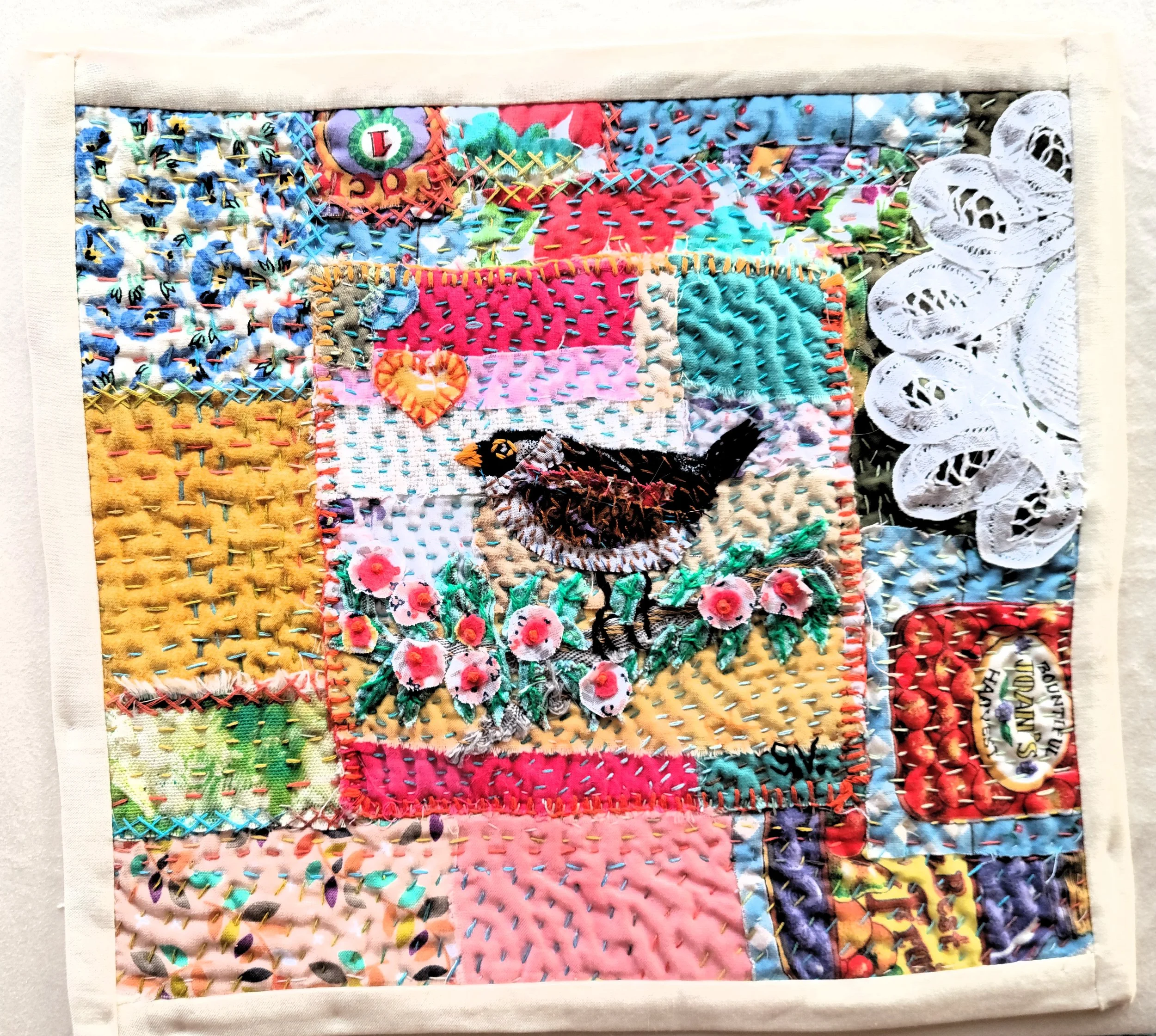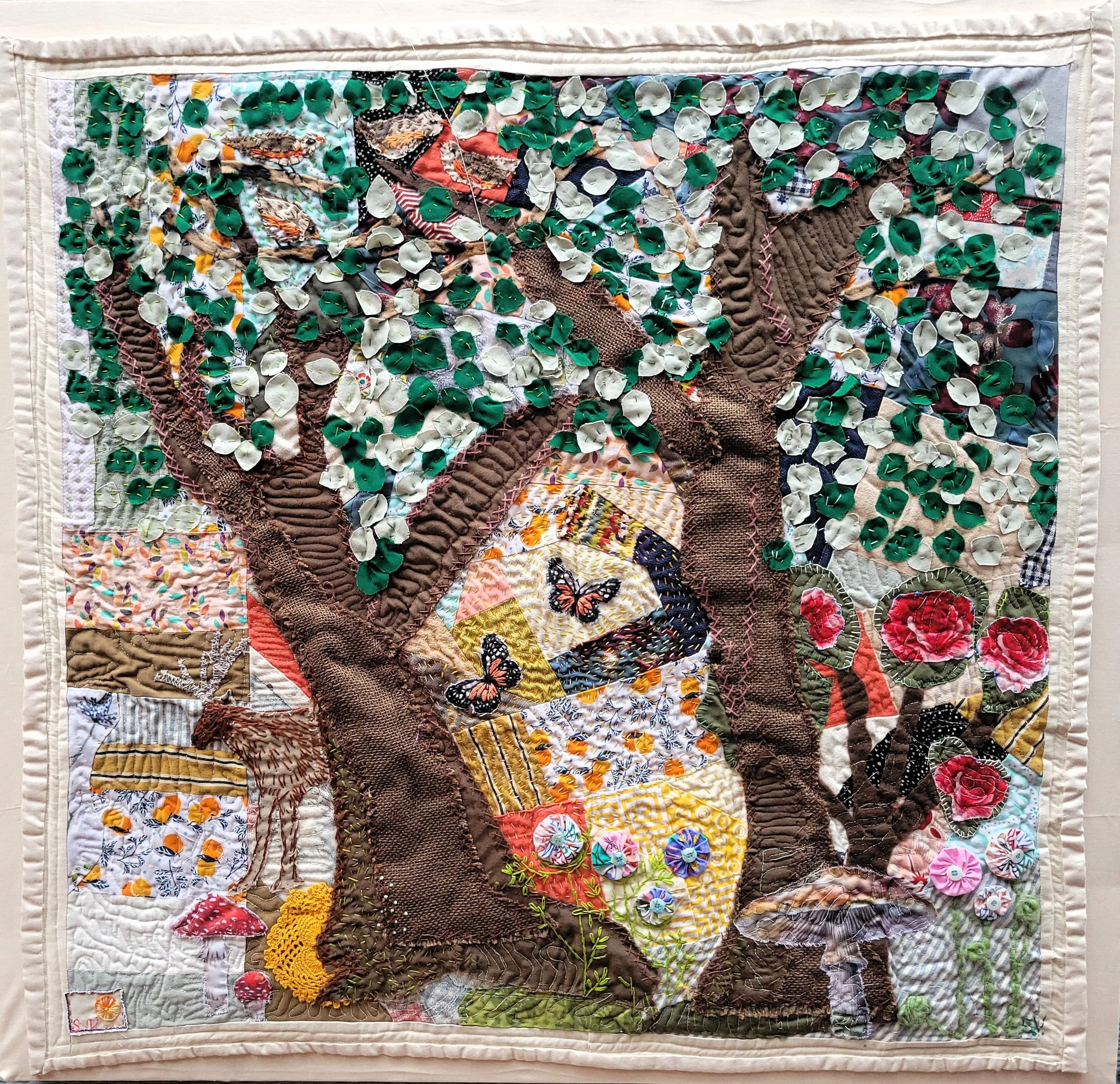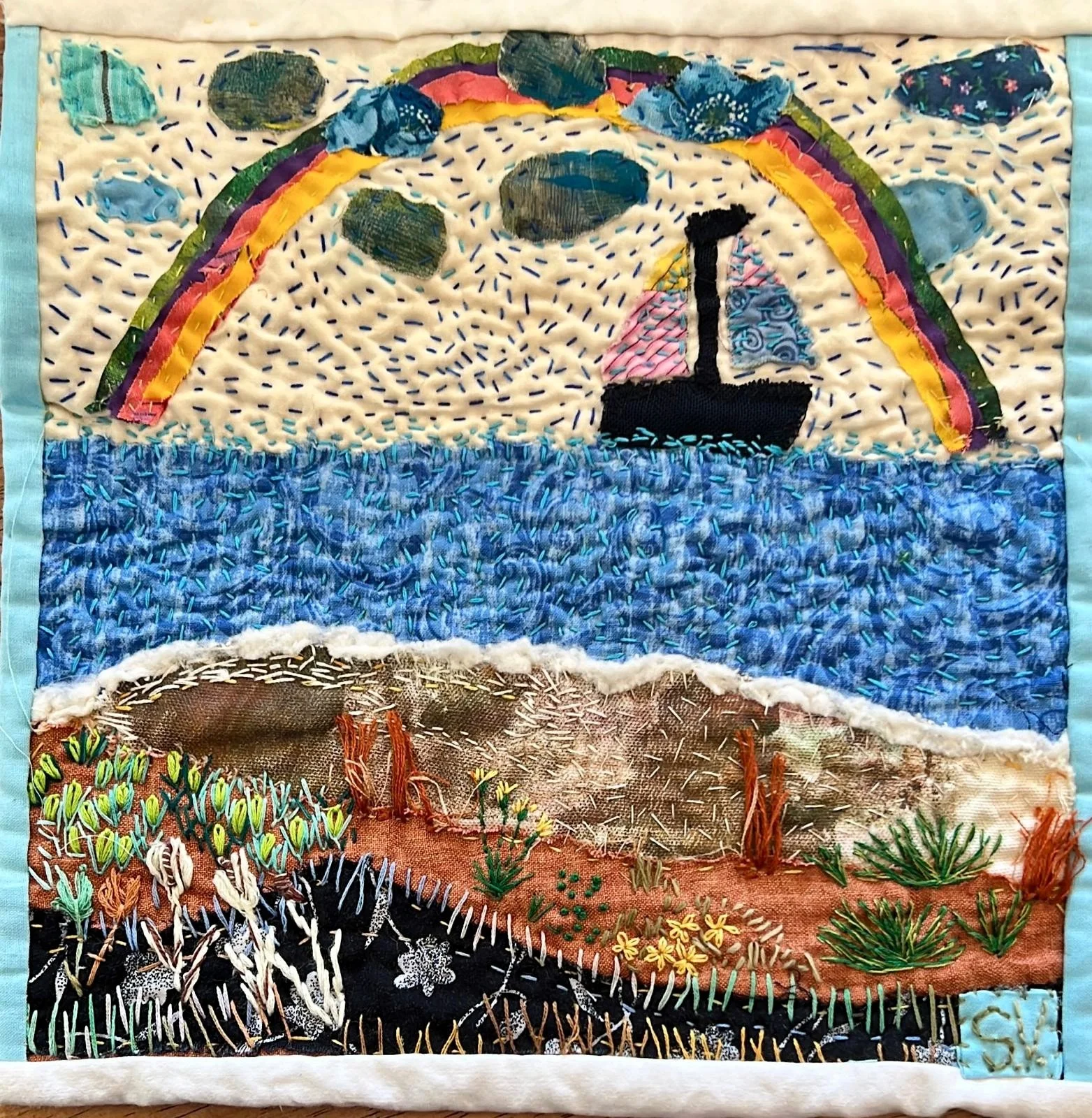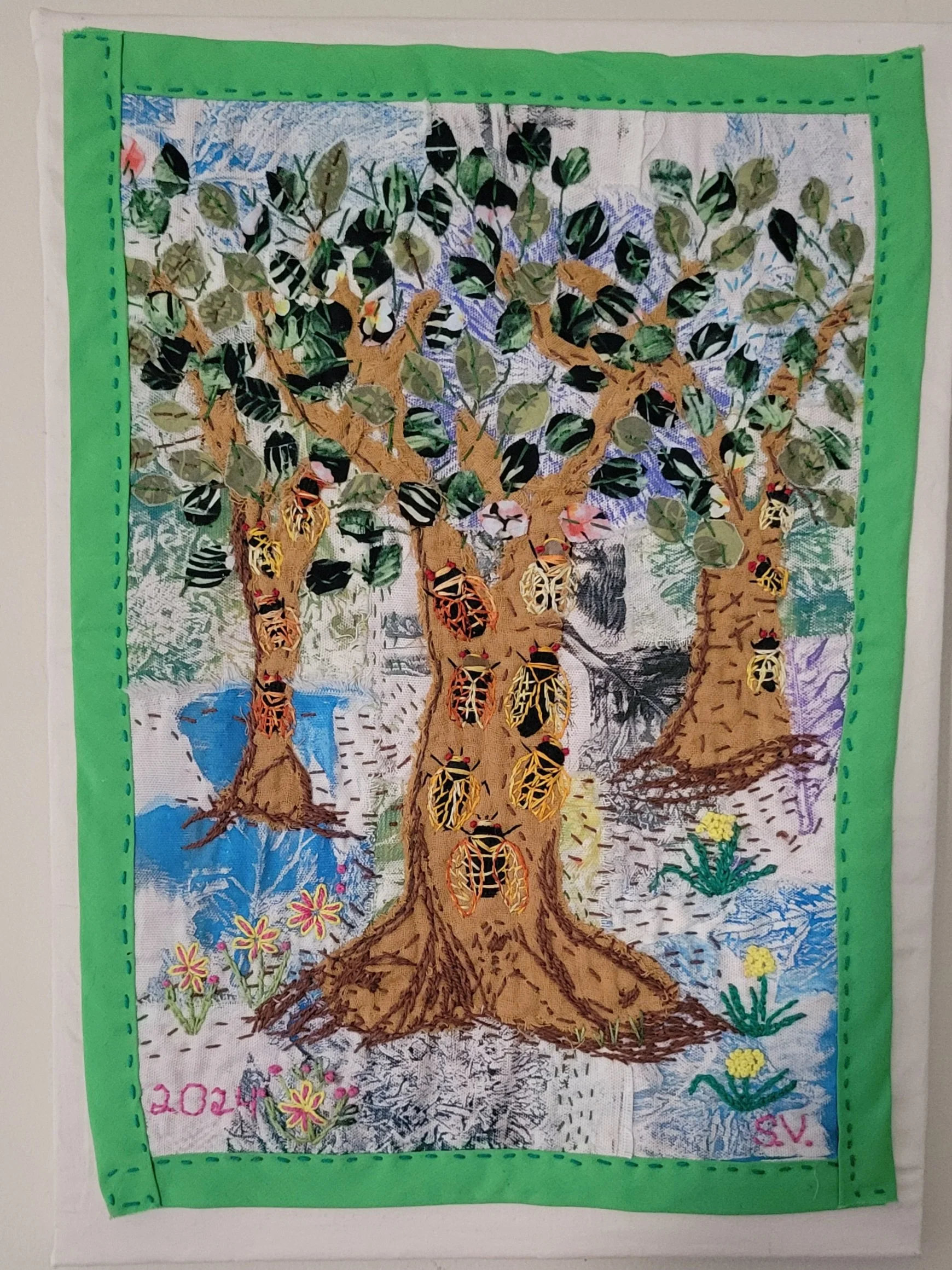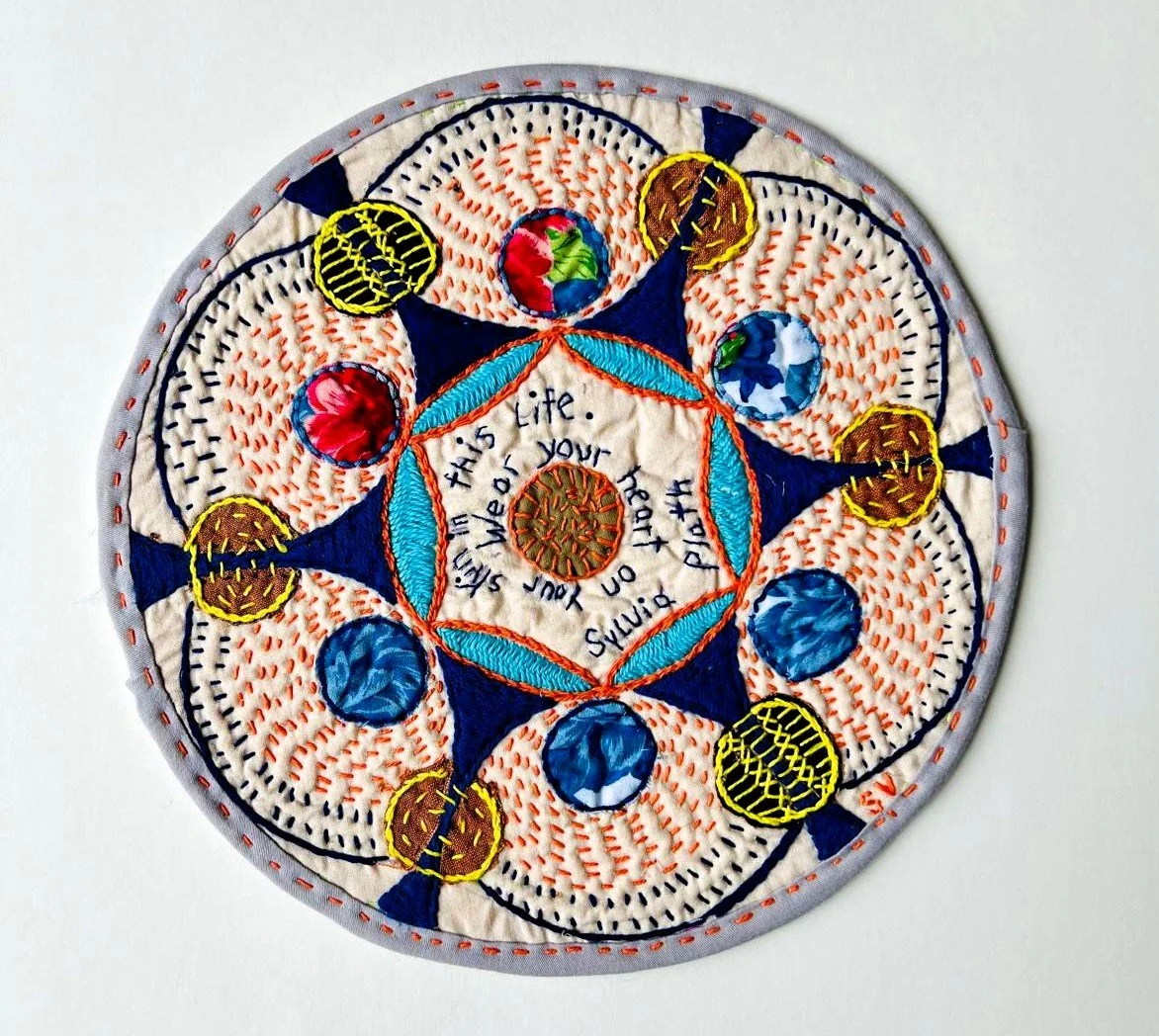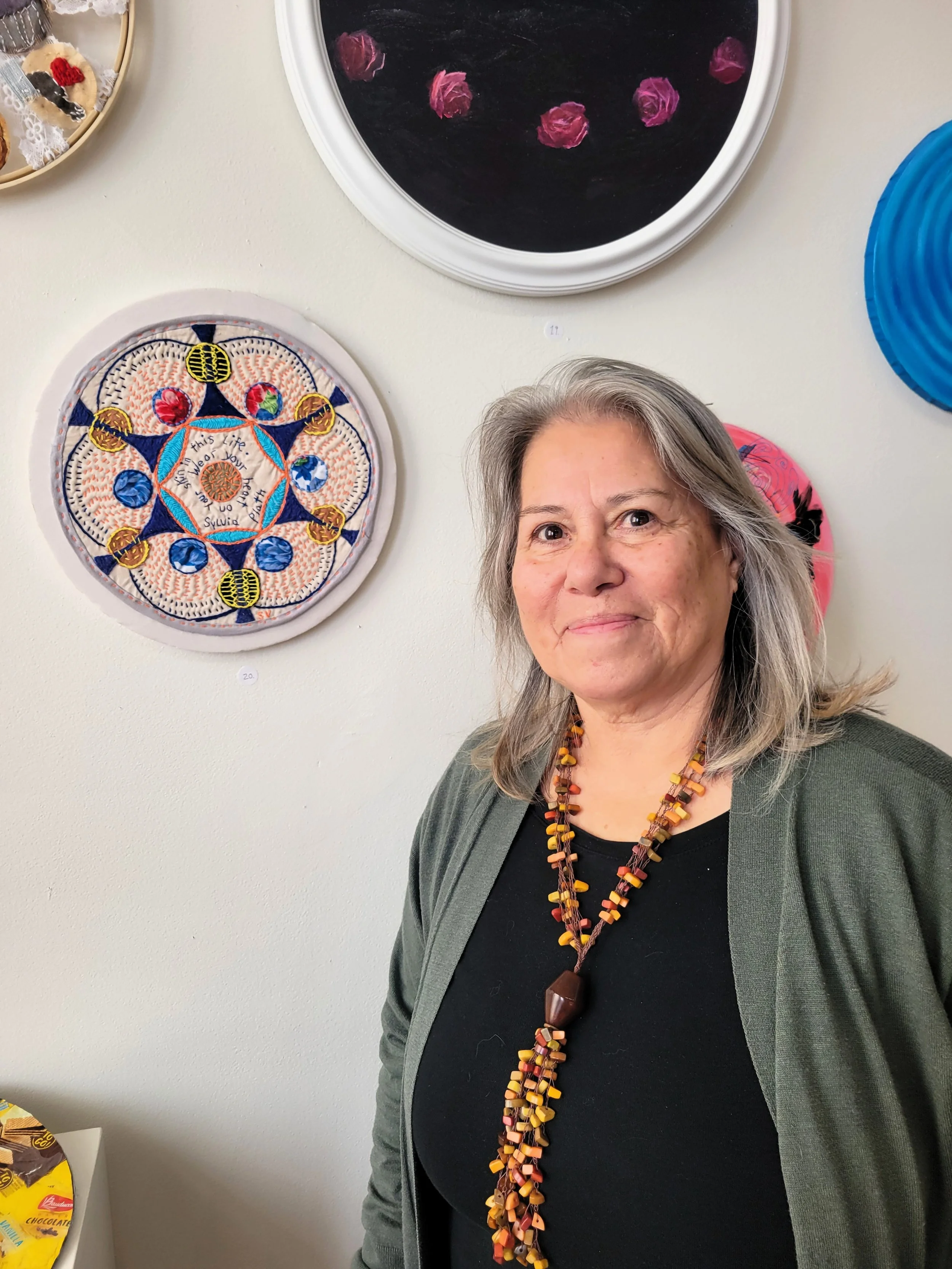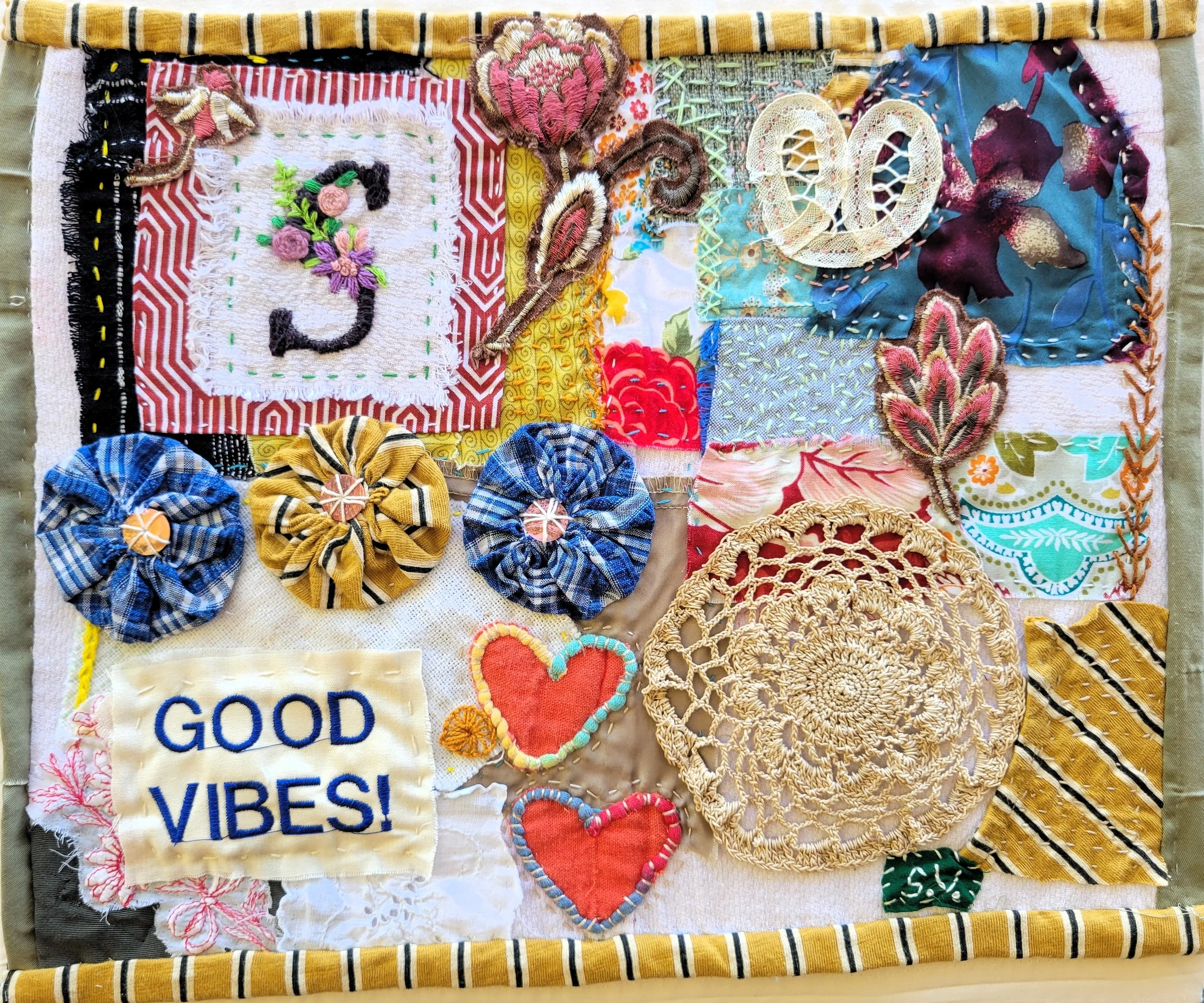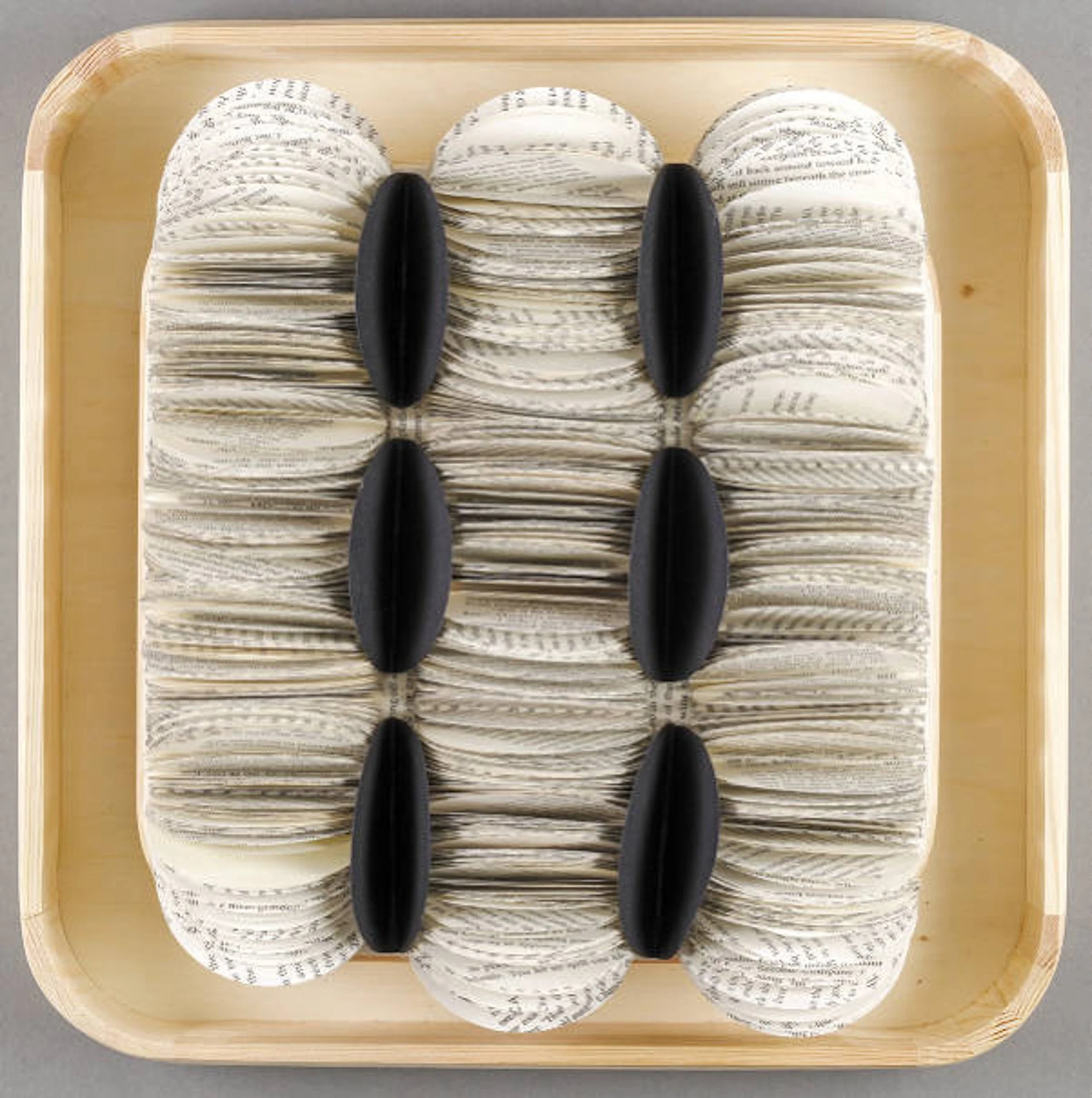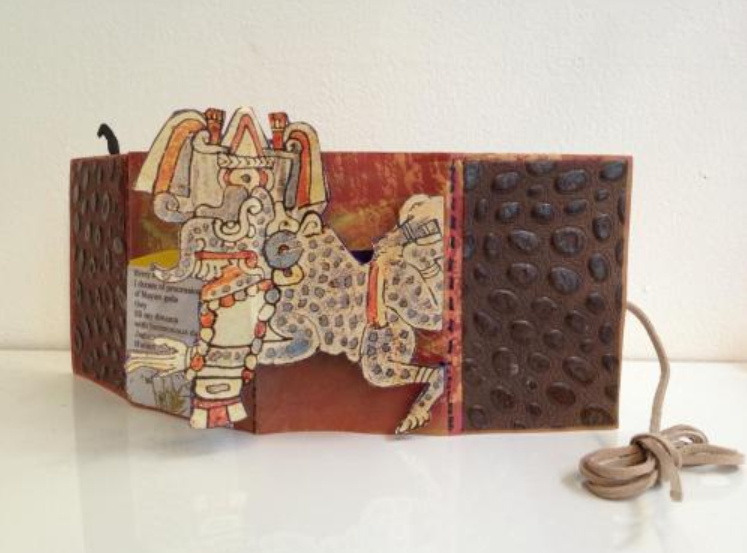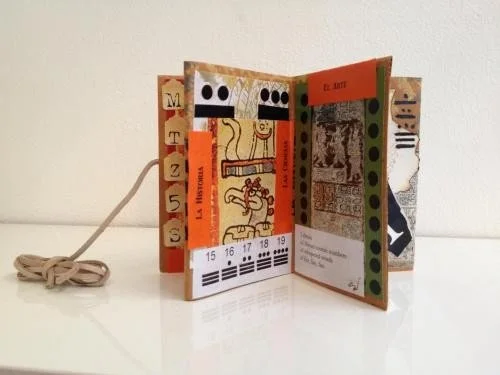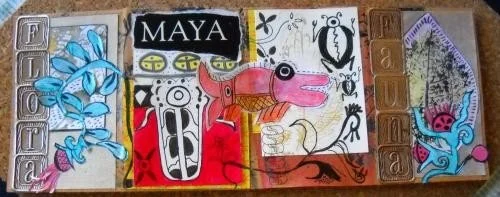
El Costurero de la Mistral. Juried Virtual Exhibition.
Memoria del Silencio
Cotton and linen with hand embroidery using cotton threads, textile appliqué, and freehand stitched text; hand quilted to integrate composition, relief, and precise artisanal detailing throughout the piece.

TOWARDS 2050. Juried Exhibition.
Various quilts exploring themes of sustainability and the future of our planet.
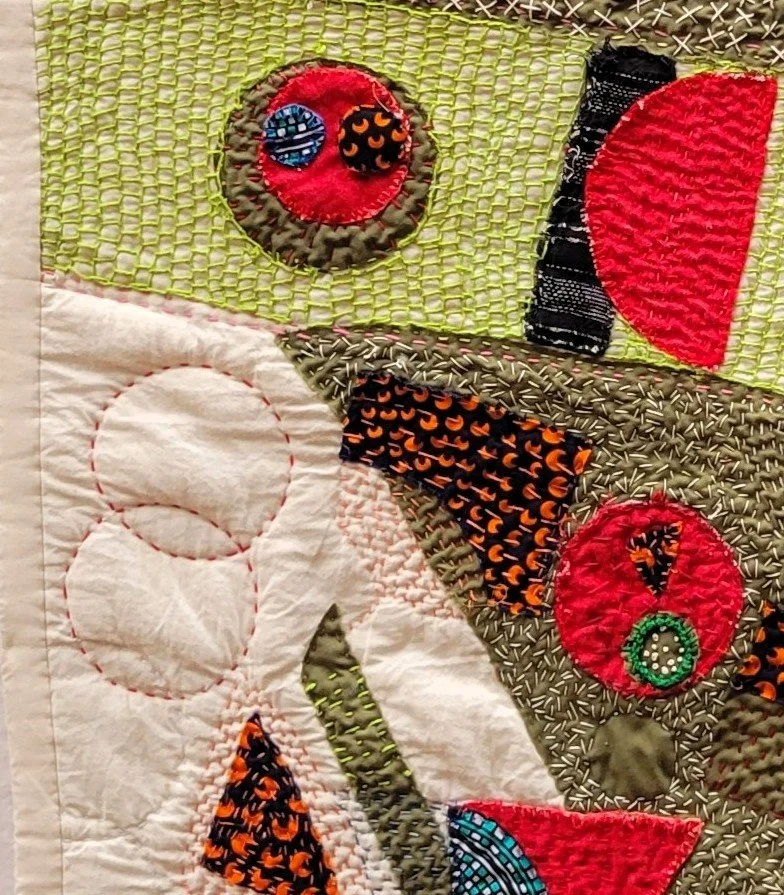
A Common Thread: The Bells Gallery. Juried Exhibition. Dothan, Alabama.
Organic Asymmetry
Cotton fabric and thread. Pieced and appliquéd with geometric shapes and hand embroidery.

2025 SAQA Benefit Auction. Online
Butterfly Whispers
In this quilt, I delve into themes of transformation, fragility, and stillness through the serene presence of butterflies caught mid-flight. Each butterfly is framed not as a specimen, but as a fleeting moment-a profound encounter with beauty and nature. My own life underwent a profound transformation through the pain of losing a child. Like a butterfly, I emerged changed: strong yet fragile, carrying permanent sorrow yet learning to cherish every moment of joy.

2025 Savannah College of Art and Design
Portrait of Reflection
7 x 8 in.
2025. A portrait stitched in fabric and thread captures introspection. Floral backgrounds and lace clouds evoke memory, thought, and the emotional landscape within a contemplative gaze. Cotton and printed fabrics, appliqué, embroidery, thread sketching, and vintage lace. Layered textures and floral motifs surround a stitched portrait, merging memory, nature, and reflection.

2025 WCA Looking Out: A Connected Perspective
Self Portrait
24 x 22 in.
Made with mixed media on fabric, this piece incorporates hand-stitched embroidery, appliqué, and fabric paint, all using recycled fabrics.
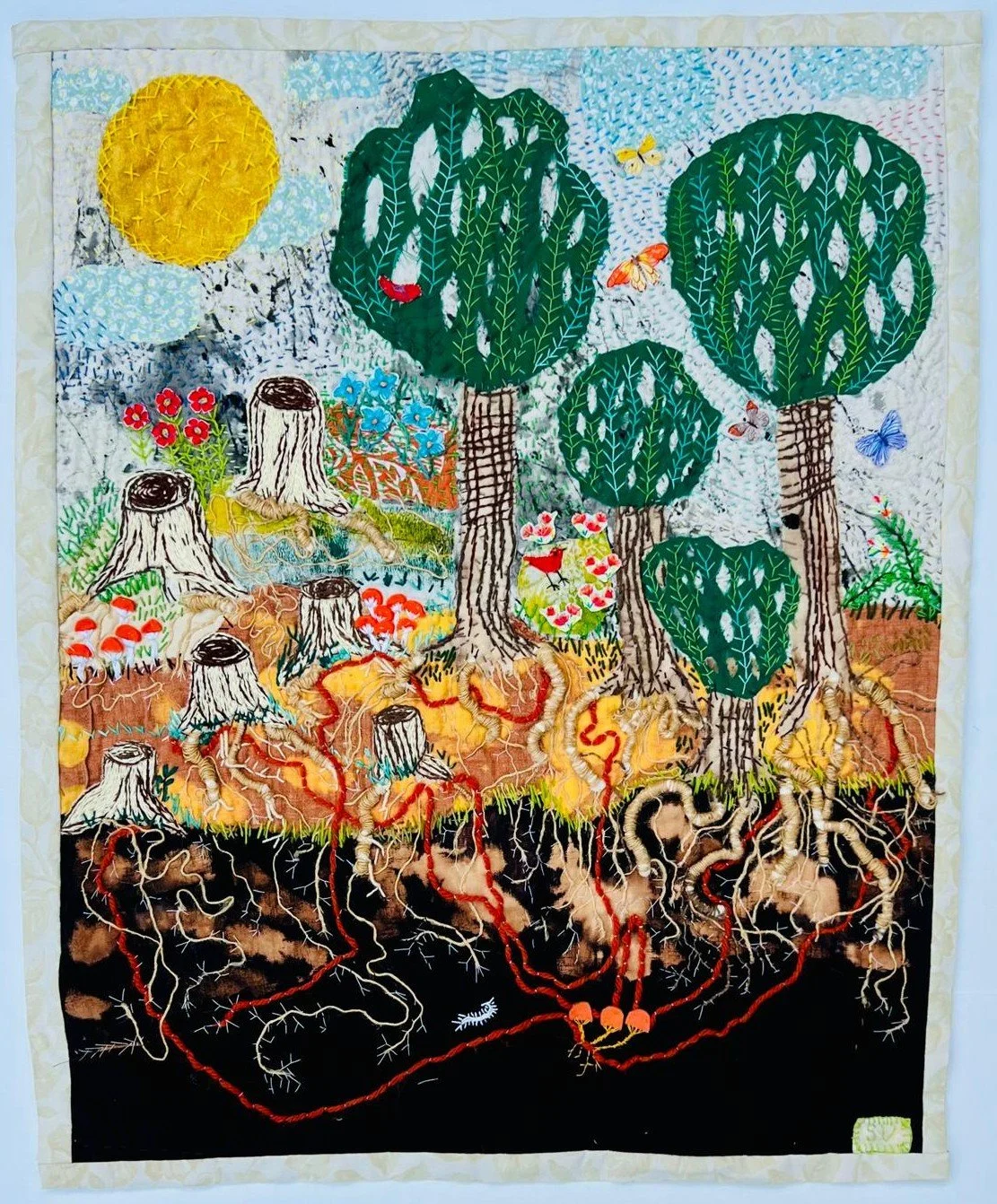
2025 Mother Nature: Women's Caucus for Art. Regional Juried Exhibition
Beneath the Surface
Forests are crucial to our environment. Partial deforestation, while not as devastating as complete deforestation, can still have significant negative effects on ecosystems. It reduces biodiversity, increases carbon emissions, alters the water cycle, and makes soil more susceptible to erosion and landslides. Although forests can regenerate, they can also become more vulnerable to diseases.
Nature is resilient. Research has shown that trees in a community thrive through collaboration and resource sharing. For example, root systems and mycelia interact harmoniously, benefiting trees, fungi, and numerous dependent species above and below ground. When a tree is cut, neighboring trees continue to send nutrients to sustain its stump for many years.
Animals lose their habitats due to deforestation. In this quilt, I depict a partially cut forest. Despite the visible tree stumps, various species such as butterflies and birds continue to inhabit the area.

Sides of Myself: "Compartmentalize Exhibit." Juried Exhibition. WCA Colorado Chapter Lakewood Cultural Center
This quilt depicts seven distinct blocks, each symbolizing aspects of myself. Despite some mismatched colors, they represent the varied roles I balance to feel whole. The central white block symbolizes my daily renewal as a blank canvas for learning. Some fabrics, including my own printed designs, reflect my creativity. Dark blocks acknowledge my negative emotions. This quilt embodies my journey, where each piece tells a story of growth and balance in my life.

2025 ALWCA Second Floor South Gallery Exhibition
Secret Garden
10.0 x 10.5 in
2020.
Recycled fabric, appliqué, and hand-stitched embroidery using cotton thread. The techniques include fabric layering and intricate embroidery stitches. The quilt features a quote from Frances Hodgson Burnett's novel The Secret Garden: 'The secret garden bloomed and bloomed, and every morning revealed new miracles.”

Pain Points: Bearing Witness in the Present Tense
This quilt depicts the contrast between vitality and suffering, resilience and rupture—a reflection of the pain a woman endures through loss. As women, we inevitably face pain in our lives, yet we find the strength to keep moving forward. Six years ago, I lost my son in a car accident—an unimaginable pain that remains with me. Despite this, I continue navigating daily life, finding solace and purpose in my art. Through this piece, I express how creating art brings me joy, even as grief remains a constant presence.

6000 Circles Exhibition
Peace
Diameter:
11 in
.
This quilt incorporates appliqué, hand stitching, patchwork with floral and geometric fabrics, embroidery, and bold text embellishments to symbolize peace.
A collaborative quilt initiative reflecting interconnectedness through circular forms.

ALWCA The Feminine-Body, Mind, and Spirit
Self Portrait
22 x 24 in
2025.
Features cotton, wool, and felt fabrics with embroidery, appliqué, and patchwork techniques. Hand-stitched using running, chain, and French nots. In this quilt, I portray myself as an independent woman and a passionate nature lover committed to environmental protection. Urban gardens, which I advocate for, offer numerous benefits to both individuals and the environment. Following the tragic loss of my youngest son in a 2018 car accident, my garden became a source of solace, aiding in my mental recovery during a time of profound grief.
Urban gardens not only provide essential habitats for birds and pollinators but also contribute to cooling urban temperatures and promoting biodiversity. In this quilt, I depict myself alongside my two faithful companions: my cats and pet chickens. These animals not only provide companionship and entertainment but also supply eggs and natural fertilizers for my garden.
I create my quilts using repurposed materials, including cotton thread salvaged from chicken feed bags. Beyond my personal art practice, I actively participate in collaborative art projects focused on raising awareness and advocating for environmental change.

The Places We Go. Show at Huntsville Hospital
Fernando's Garden
32 x 31 in.
Built on a background crazy quilt patchwork. Using recycled fabrics, with appliqué techniques for trees, leaves, and butterflies. Embellishments include embroidery stitches and layered fabric to create a textured, nature-inspired scene.
A selection of quilts designed to bring warmth and inspiration to hospital visitors and staff.

Fauna Exhibition. The SE Center for Art Virtual Gallery
The Year of the Cicadas
11 x 18 in.
Mixed media on fabric. This piece uses hand-stitched embroidery, appliqué, and fabric paint. The layered textures depict trees with details, framed by a green fabric border.

SE Regional Exhibition: The 6000 Circles Project
Healing Mandala
Diameter: 11 in.
This quilt uses hand embroidery, applique, vibrant threads, hand-dyed fabrics, and bold stitching techniques, forming an intricate mandala-inspired design.
A collection of quilted circles symbolizing unity and artistic expression.

Eco-Art Caucus: Environmental Traveling Sketchbook
A collection of artistic expression.


AAMU Solo Exhibition: Displayed at the AAMU Art Gallery (2024)
Alabama A&M Art Gallery Features Spanish Professor's Solo Textile Exhibition
Spanish professor, Susana Vizcarra, is showcasing her solo exhibition, “Collections of Textiles,” at the AAMU Art Gallery in the R.D. Morrison Fine Arts Building, available for viewing through October 31. Originally from Uruguay, Vizcarra’s exhibit reflects her lifelong journey in textile arts, starting from her teenage years when she first learned embroidery in her home country.
“This early experience ignited my artistic inspiration,” explains Vizcarra. “Nearly 30 years ago, after moving to the U.S. with my family, I discovered quilting, merging my love for textiles with my background in embroidery.”
Over the years, Vizcarra has crafted a variety of quilts, from decorative wall hangings to functional baby quilts, each piece marking a significant step in her artistic evolution. In 2018, after the loss of her youngest son, Fernando, her work took a deeply personal turn.
“I transformed his clothing into a memorial quilt, an emotional process that shifted my approach,” she shares. “Since then, I’ve created nearly 15 ‘In Memoriam’ quilts dedicated to Fernando, incorporating applique, embroidery, and hand-dyed fabrics, each element chosen to honor his memory.”
Beyond the memorial series, Vizcarra has completed nearly 30 other quilts, including
garden-themed pieces inspired by her own backyard, and quilts featuring quotes, reflecting her passion for literature. Her work explores abstract designs, pushing artistic boundaries in the world of quilting.
“Quilting has become a source of solace and a means of self-expression, helping me navigate the complexities of grief and joy,” says Vizcarra. “What began as an early teenage inspiration has evolved into a profound and ever-growing body of work.”
Vizcarra holds a B.A. in Latin American Studies and an M.A. in Romance Languages, with a focus on Spanish and Portuguese, from Texas Tech University. She also earned an M.A. in English from the University of Alabama in Huntsville. She has been a professor of Spanish at Alabama A&M University for the past five years.
There will be a closing reception for the exhibit on Tuesday, October 29 at 12:30 p.m. in the gallery.

"PECOS." Roswell Convention & Civic Center, Roswell, NM
Fernando's Garden 32 x 31 in Built on a background crazy quilt patchwork. Using recycled fabrics, with appliqué techniques for trees, leaves, and butterflies. Embellishments include embroidery stitches and layered fabric to create a textured, nature-inspired scene.



Nature Is Our Best Friend (2014)
Public Library, Madison, AL
Vizcarra’s art pieces now on display at Madison Public Library
Suzanna Vizcarra created this book art, "Nature Is Our Best Friend" with fresh leaves from different plants in her garden.
Vizcarra is an Uruguayan-American writer and professor of literature and languages.
As a visual artist, Vizcarra works and experiments with different types of materials. “I’ve been always curious and have the desire for expressing my thoughts using concrete materials, along with words,” she said.
At the library, Vizcarra is exhibiting her “handmade books.” In 2013, she participated in the “Ritual” art show in Philadelphia, Pa. and made three small books representing a poem, “Mayan Dreams,” about Mayan art and culture.
“I made the books resembling the codices,” Vizcarra said. “The Mayan registered everything in their codices from history to science, philosophy, literature and religion.” Tragically, thousands of codices were burned during the Spanish conquest.
She constructed her two handmade books at the library with recycled materials, papier-mâché, ink, watercolors, prints and calligraphy. To complete her small books, Vizcarra worked for three weeks. “I made the book structure first and then worked the images separately,” she said. “Usually, the thinking of a project takes longer.”
Each book represents two different journals.
“My Little Calligraphy Book.” “The little book called ‘Nature Is Our Best Friend’ depicts fresh leaves from different plants from my garden. Sometimes, we don’t have time to observe the beauty in nature that surrounds us,” she said.
In addition in Madison, Vizcarra is showing the first two pieces that she created: engraved gourds. This work won awards for sculpture at the Lubbock Art Alliance Gallery.
Currently, her “Accordion Book” on display at the Kalamazoo Book Arts depicts images in watercolor and ink. She also is working on a project, “Envelope as a Canvas,” for an October art show in Cambridge, Mass.

Piñatas (2014)
Public Library, Madison, AL
Preparing a Piñata
MADISON – Susana Vizcarra’s latest workshop at Madison Public Library will explain construction and the history of pinatas.
This free session on March 8 will meet from noon to 3 p.m. This educational program is intended for adults and 10-year-olds and older.
“I have a passion for the Spanish language and Latin-American culture,” Vizcarra said. “My family and I have been living in Madison for several years. I like to share this activity with the people of Madison as a way to give back to the community that I love.”
Most people associate pinatas with a Mexican tradition. “However, pinatas appeared for the first time in Chinese history as early as the ninth century,” Vizcarro said.
Those pinatas were made of clay or gourds, shaped like a cow or an ox and represented a good omen for the coming year, she said.
In the 14th century, Marco Polo brought pinatas to Europe. Spanish Augustinian monks brought clay or paper mache pinatas to America for religious celebrations. Filled with candy (temptations), pinatas had seven points representing the seven deadly sins.
“Today, pinatas are used in Mexico in practically every occasion,” Vizcarra said. “The custom was imported to the United States by Mexican immigrants and today is very popular in children’s parties.”
To make a pinata, participants will use one balloon, tissue paper, a disposable bowl and spoon, glue, flour, water, poster paper, newspapers, scissors and one yard of rope.
The class will make “engrudo paste, a mix of water and flour” and use newspaper strips to cover the inflated balloon. Next, they will make cones for the points. Finally, the pinata is covered in tissue paper for decoration.
Vizcarra is an adjunct faculty member at the University of Alabama in Huntsville and teaches Spanish Language and Culture during summer sessions.
She earned a bachelor’s degree in Latin American and Iberian studies and a master’s degree in Spanish at Texas Tech University and a master’s degree in English at UAH.



Sacred Memories (2013)
Gallery at El Pueblo de Los Angeles Historical Monument
The Catrina and the Mariachi Puppet Theater


